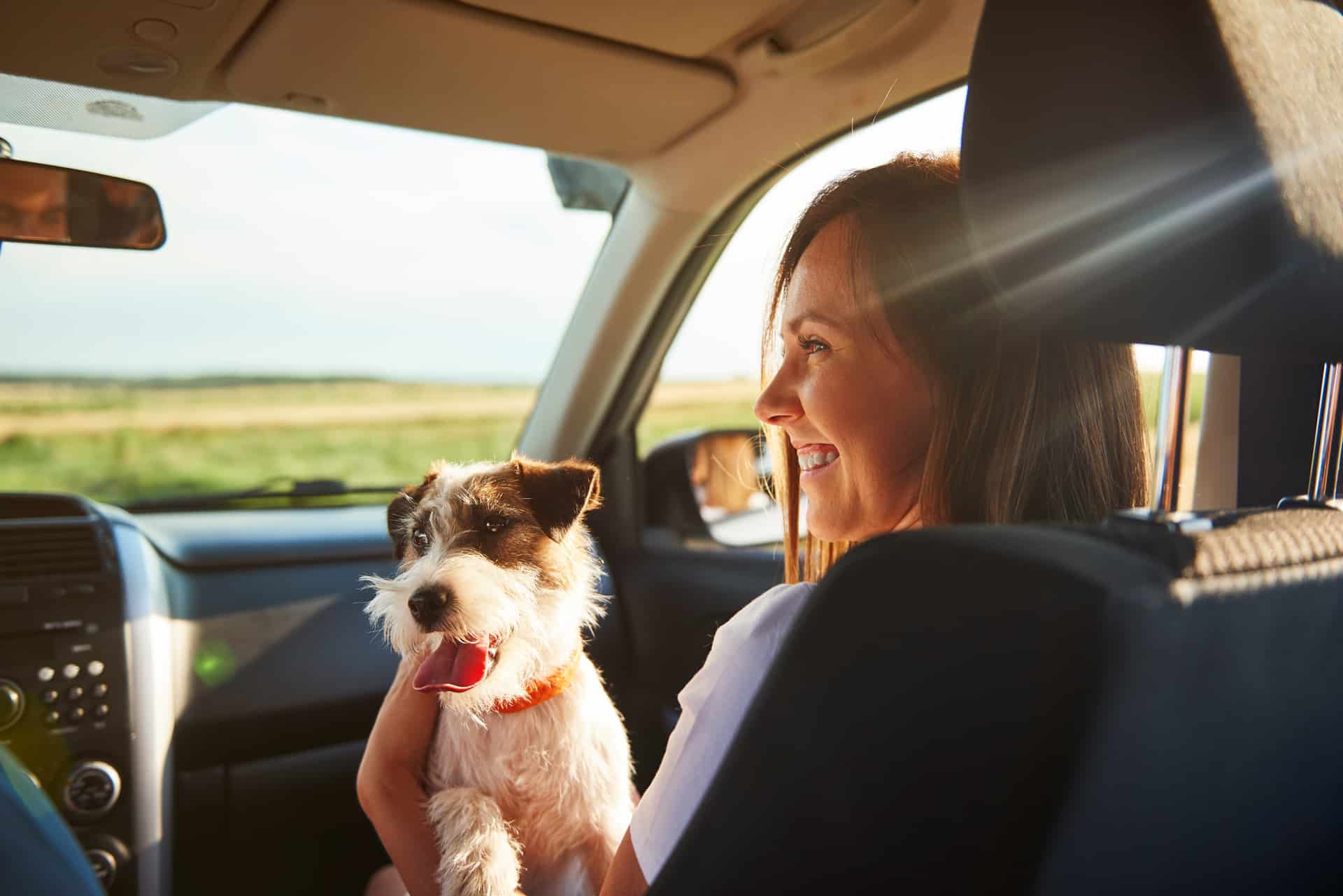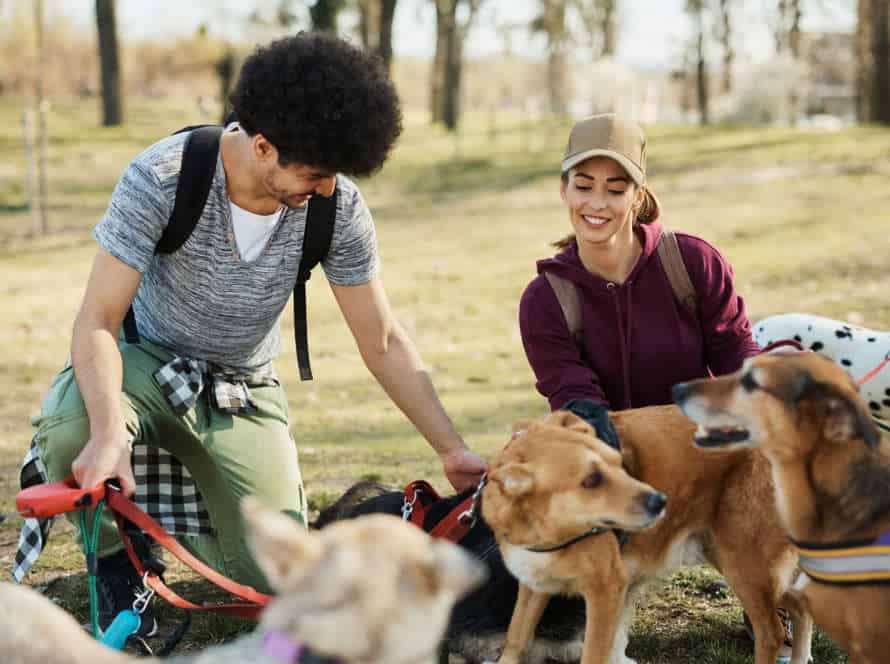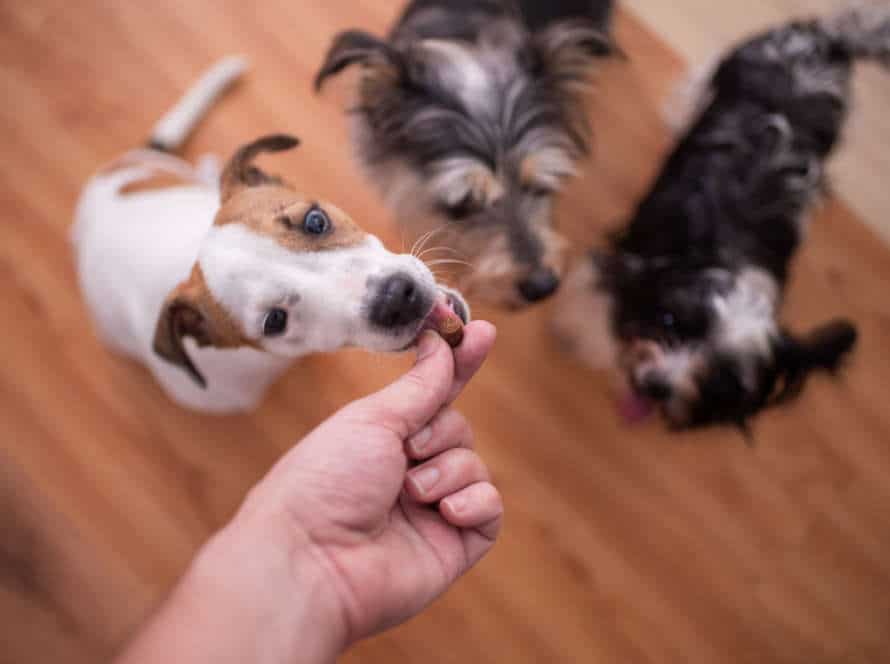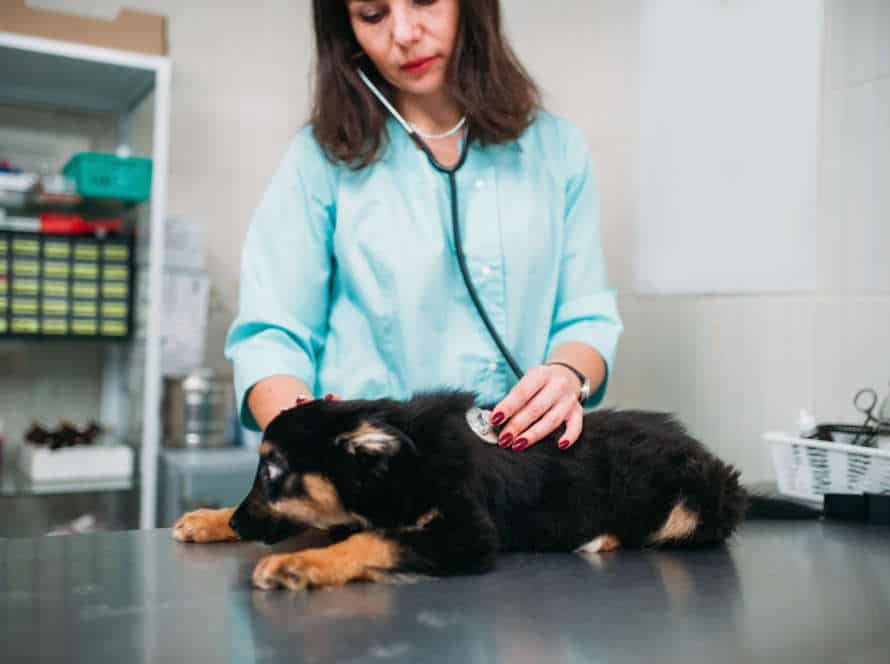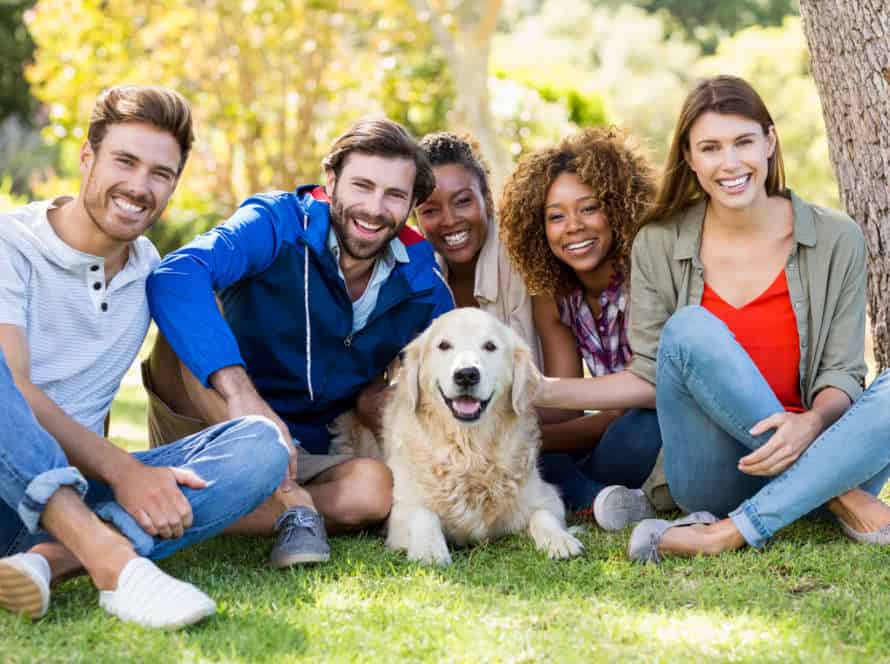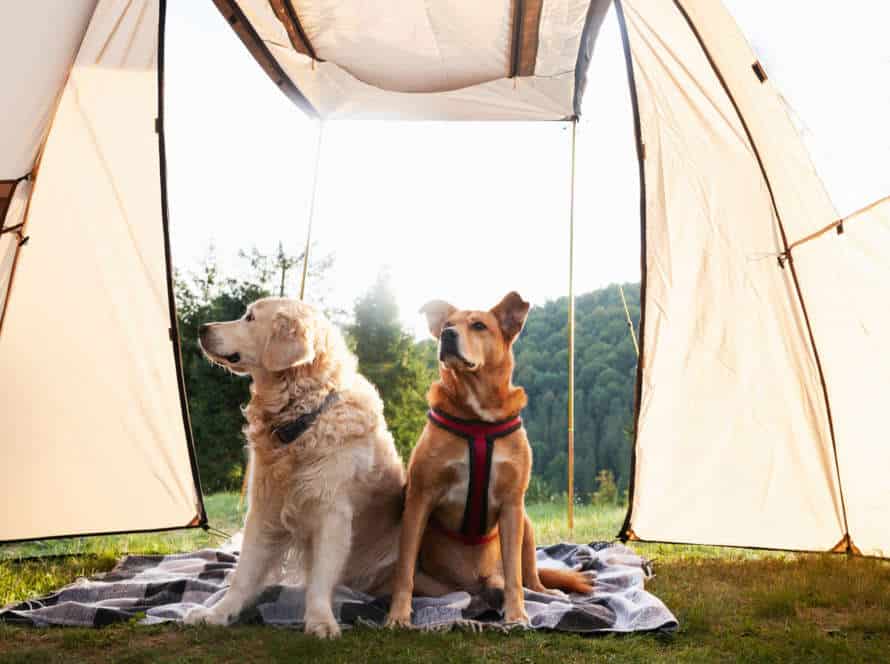Travel Training Tips: Ensuring a Well-Behaved Dog on the Road
Exploring with your pup can be fun and fulfilling, but it’s essential to guarantee your furry mate is well-mannered and content on the journey. Here are some tips to guarantee success:
- Start with short voyages to get your pup accustomed to the experience. Increase distance and duration gradually.
- Employ a pet carrier or harness to keep your pup safe and comfy.
- Pack familiar items such as blankets, toys, and treats to make your pup feel at home in new places.
- Make a travel routine that includes breaks for exercise, bathroom, and meals.
- Train your pup to be well-behaved in new circumstances and around strangers and animals.
These easy travel training tips will make sure that your pup is an elated, well-mannered, and valued companion on the road.
Preparing for the Trip
Before you set off on a road trip with your pup, prep them up! Teach your dog some travel etiquette and make sure they behave while on the go. Training your pooch in advance will guarantee a great time for all. Here are some tips to get your doggie ready for the journey:
Consulting with vet before traveling
Are you planning a trip with your furry friend? It’s important to talk to your vet first. They can give you great advice on how to prepare your dog for travel, plus any special precautions you need to take based on breed, health, and type of travel.
Here are some things to discuss with your vet:
- Vaccinations: Check if your pup is up-to-date with their shots, especially if you’re traveling to another state or country.
- Medications: If car rides or flights make your pup nervous, your vet may be able to prescribe medicine to help.
- Health concerns: If your pup has a chronic condition or special needs, your vet can tell you how to manage them during travel. Plus, make sure you have all the necessary supplies (meds, special food, etc.)
Pro tip: Don’t forget to bring a copy of your pup’s health records and any necessary meds or supplies for the trip.
Packing necessary items for dog’s comfort and safety
Pack for your pup’s coziness and safety. Necessities bring familiarity, security, and well-being. Here’s what you need:
- Food and Water: Bring enough food and water to last the trip. Collapsible bowls, too.
- Leash and Collar: ID tags in case they get lost. Plus a leash for potty and exercise breaks.
- Bedding: Your pup’s bedding for comfort and familiarity.
- First Aid Kit: Bandages, gauze, ointment. In case of medical needs.
- Toys and Treats: Your pup’s faves for comfort and anxiety relief.
With these, you can be sure your pup is comfy, safe, and ready to hit the road!
Familiarizing dog with car rides
Familiarizing your pup with car rides is a must! Here are some tips to get them ready:
- Start small- take them around the block or to their favorite spot.
- Bring their faves- toys, blanket, etc.
- Use restraints- keep them secure and safe.
- Reward good behavior- praise and treat.
- Familiarize with the car- let them sniff around before you start it up.
Pro tip: A well-behaved pup makes the ride safer and more enjoyable!
Training the Dog for Travel
It’s your job as an owner to make sure your pup is good-mannered when travelling. So, invest some time and effort teaching your dog how to act in different places, like a car, plane or train. This includes teaching them to stay in their seat and keeping them calm in new situations. Let’s take a peek at how you can train your doggo for travel.
Basic obedience training
Obedience training for dogs is essential. It allows them to take orders without getting sidetracked or displaying inappropriate behaviors. This builds a strong bond between pets and their owners.
Here are some suggestions for traveling with well-mannered canines:
- Start with straightforward commands like ‘sit’, ‘stay’, ‘come’, and ‘heel’.
- Reward desired behavior with treats, toys, and praise.
- Train in an environment with minimal interruptions, then increase the difficulty.
- Be consistent. Daily practice in short intervals is best.
- Be patient – make it an enjoyable experience for your pup. That will keep their attention.
Crate training
Crate training is essential for travel training with dogs. It keeps them safe, comfy and well during long trips. Here’s how to crate train:
- Introduce the crate in a peaceful atmosphere.
- Use treats and compliments to encourage your dog to enter the crate alone.
- Increase time spent in the crate gradually, from short periods to longer ones.
- Make sure the crate is the right size for your dog, enough room to stand, turn, and lie down easily.
- Put bedding and toys in the crate to make it a familiar place.
- Use it during car rides for safety, and to avoid distractions.
- Take regular breaks for your dog to stretch and pee.
- Pro tip: Vaccinate your dog, and get identification tags and a microchip in case they get lost while travelling.
Housetraining
Housetraining your pooch is a must to have an enjoyable home life. Here are some tips:
- Set up a daily routine: Dogs love routine. Give them mealtimes and regular potty breaks. Take your pup out as soon as you wake up, after meals, and before bedtime.
- Find a ‘potty spot’: Pick a place in the outdoors for your pup to do their business. Lead them to this spot each time you go out for a break.
- Utilize positive encouragement: Reward your pet for good behavior like going potty in the right spot. Give them treats and verbal praise.
- Think about crate training: Dogs try not to soil their sleeping area. Crate training can be useful in housebreaking your dog while keeping them safe and comfortable.
- Be patient and consistent: Housetraining takes lots of time and patience. Stay calm and don’t punish your pup for accidents.
Pro tip: Hang a bell or chime near the door to signal potty time. This can help your pup link the sound to the action and make training easier.
Ensuring Safety During the Trip
Travelling with your pup is a super way to make a connection and discover the world! But it can also be risky if you and your pooch aren’t ready. Making sure safety while travelling is the main step to teaching your pup the correct travel etiquette. In this part, we’ll talk about the top techniques to make sure your dog is safe and well-behaved whilst on the road.
Using safety restraints for dog
Safety restraints for dogs are essential for protecting your furry friend on a road trip. They prevent them from jumping out and also shield them from harm in an accident.
Here are three safety restraints you can use:
- Crate: A crate provides secure containment for your pet. It stops any fidgeting or wandering.
- Seat belt harness: This harness attaches your pup to the car’s safety belt. This ensures they remain safe during sudden braking or collisions.
- Car barrier: Especially useful for large dogs and SUVs, car barriers provide extra space. They also keep the trunk area separate from the passenger area.
Note: Make sure the safety restraint is suitable for your pet’s size and weight, and is installed correctly.
Pro Tip: Let your pup get used to the restraint at home before using it on a long drive.
Never leaving the dog in a parked car
Leaving your pup in a parked car is risky and even fatal. Cars can get too hot, causing your dog to experience heatstroke, dehydration, and maybe even passing away. It’s necessary to plan for your pup if you’re traveling and never ever leave them in the parked car.
Below are some tips to make sure your trip with your pooch is both safe and fun:
- Plan ahead and figure out pet-friendly lodgings and activities along your route.
- Purchase a solid and cozy crate or carrier for your pup to travel in.
- Utilize a safety harness or seatbelt to keep your dog in the car.
- Take regular rests for exercise, pee breaks, and giving water.
- Never ever leave your dog alone in the car, not even for a few minutes.
Regular breaks for exercise and potty time
Frequent breaks are essential for your pup’s safety and wellbeing on a road trip. As a pet parent, you must ensure your dog has enough time to stretch, pee and stay hydrated.
Here are some tips:
- Schedule 10-15 minutes every 2-3 hours, depending on your dog’s age, breed and health.
- Look for safe and clean rest areas or pet-friendly spots where your pup can exercise and pee.
- Bring plenty of water and snacks.
- Secure your pup with a leash or a harness during the breaks and pit stops.
- Time the breaks so your dog does not feel stressed or restless.
Staying in Pet-Friendly Accommodations
Got a furry friend? Time to take them on holiday! Thinking about where to stay? Dog-friendly accommodation can be tricky to find. But, if you want your pup to enjoy the trip, make sure they feel comfy. Here are some tips to help find pet-friendly hotels and lodgings. Enjoy your travels!
Researching and booking pet-friendly hotels
Searching for pet-friendly hotels can be tricky, but with some research, you can find a cozy and pleasant stay with your pet! Here are some tips:
- Start by searching online. Look at websites that offer pet-friendly lodgings, or contact the hotel directly.
- Search for hotels that provide pet-friendly amenities, such as dog beds or bowls, or that have access to outdoors areas for activities.
- Check the hotel’s rules regarding pets, such as fees, weight limits or breed restrictions.
- Tell the hotel staff about your pet before arriving and ask about any specific regulations, for example if pets are not allowed in some areas.
By preparing and knowing the pet-friendly policies, you can make sure a pleasant stay for both you and your pet.
Proper cleaning and waste disposal
When staying in pet-friendly accommodations, proper cleaning and waste disposal is essential for a comfy and clean environment for you and your pet. Here are some tips:
- Bring paper towels, disinfectant spray, and pet-safe cleaning products.
- Bag and dispose pet waste in designated trash cans or bins.
- Lint roll or vacuum pet hair and debris from furniture and floors.
- Keep pet feeding and watering areas clean to avoid bacteria and odours.
- If your pet has an accident, clean it right away and use enzymatic cleaner to get rid of any smell.
Taking proper cleaning and waste disposal measures let you and your pet have a great stay in pet-friendly accommodations.
Obtaining necessary travel documents for the dog
Getting the right travel docs for your pup is key to having an enjoyable journey with them. Here’s what you might need:
- A Health Certificate – this shows that your doggo is up-to-date with vaccinations and is healthy enough to travel.
- Identification Tags – make sure your dog has a tag with your contact details on it.
- Rabies Certificate – it proves your pup’s had the rabies jab.
- Microchip Info – double check their microchip is up-to-date, so they can be identified if they get lost while you’re away.
Before travelling, contact the airline, car rental agency and accommodation to find out their pet policies. Good prep and the right documents mean a stress-free trip!
Managing the Dog’s Behavior While Traveling
Travelling with your pooch? Need to keep them behaved?
Here are tips to make it easier! Train your pup to stay calm on the road. Focus on managing their behaviour. It’ll make your journey enjoyable. So, make sure you consider these travel training tips!
Dealing with barking and whining
Tackling barking and whining can be a struggle for pet owners when taking their furry friends on trips. Luckily, there are several ways to manage these behaviours and ensure a good-mannered dog on the road.
Here are a few helpful tips for reducing barking and whining when traveling with your dog:
- Give your dog a cozy environment with familiar bedding, toys and treats.
- Take regular breaks to let your dog move about and use the bathroom.
- Train your dog to comprehend basic commands like “quiet” or “calm down“.
- Utilize distraction techniques like toys, chews or puzzles to switch your dog’s concentration.
- Think about using a calming aid or medicine suggested by your vet.
By following these tips, you can decrease barking and whining and ensure a more relaxed travel experience for you and your furry mate.
Preventing destructive behavior
Train your pup for travel with these helpful tips!
- Crate training is essential for a familiar and secure space.
- Bring plenty of toys for entertainment.
- Exercise before trips to use up energy.
- Use positive reinforcement with treats and praise.
- Avoid harsh punishment.
- Start training early with short car rides for comfort.
You’ll be able to enjoy stress-free trips with your pup!
Keeping the dog calm during travel stressors
Traveling can be a challenge for dogs. But, there are ways to keep them relaxed and well-mannered. Here are some ideas:
- Before the trip, get them used to the car, crate, or carrier.
- Stop often to let your pup drink and do their business.
- Play calming music or give them a chew toy or treat to keep them calm.
- Put an ID tag on them in case they get lost.
Using these tips will make sure your dog is safe, content, and behaving while on the go.
Frequently Asked Questions
Q: How can I prepare my dog for travel?
A: Start by getting your dog used to the crate or carrier they will be traveling in. Gradually add longer periods of time in the crate or carrier, and take short car rides to get them accustomed to traveling. Also, make sure your dog is up-to-date on all necessary vaccinations and health checks.
Q: How can I keep my dog calm during travel?
A: Bring familiar items such as blankets or toys, and try to maintain a consistent routine. Avoid feeding your dog right before travel, and make sure they have access to water. If your dog experiences anxiety or motion sickness, consult with your veterinarian about medications or supplements that can help.
Q: How often should I stop during a road trip with my dog?
A: It is recommended to stop every two to three hours to let your dog stretch their legs, go to the bathroom, and get some fresh air. Make sure to bring along plenty of waste bags and clean-up supplies.
Q: Can I bring my dog on a plane?
A: Yes, many airlines allow dogs to travel in the cabin or cargo area. Check with your airline for their specific regulations and requirements. Your dog will need to be in an approved carrier or crate that fits under the seat or in the cargo hold.
Q: Do I need to make special arrangements if I am traveling internationally with my dog?
A: Yes, traveling with a dog internationally requires more preparation and paperwork. You will need to research the specific requirements for the country you are visiting, and may need to obtain a health certificate or other documentation from your veterinarian.

